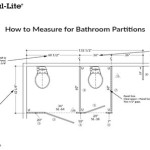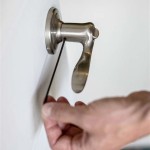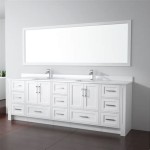How To Make A Bathroom Sink From a Dresser
Repurposing a dresser into a bathroom vanity adds a unique, personalized touch to any bathroom. This project requires moderate DIY skills and careful planning. The following guide outlines the steps involved in transforming a dresser into a functional and stylish bathroom sink.
Choosing the Right Dresser: Selecting the appropriate dresser is crucial. Solid wood dressers are preferred due to their durability and resistance to moisture. The dresser's dimensions should complement the bathroom space, providing ample counter space while allowing comfortable movement. Inspect the dresser for structural integrity, ensuring it can support the weight of a sink and countertop.
Gathering Necessary Materials and Tools: Before starting, assemble the necessary tools and materials. These typically include the dresser, a sink (vessel, undermount, or drop-in), faucet, plumbing supplies (P-trap, drain assembly, supply lines), countertop (marble, granite, butcher block, or laminate), safety glasses, gloves, measuring tape, pencil, level, jigsaw, drill, screwdriver, plumber's putty, silicone caulk, sandpaper, and wood sealant.
Preparing the Dresser: Remove existing hardware, including drawers and drawer slides. Carefully measure and mark the desired location for the sink on the dresser top. Consider the sink's dimensions and placement for ergonomic use. If using a drop-in or undermount sink, a cutout will be necessary. If opting for a vessel sink, this step can be skipped.
Creating the Sink Cutout (for Drop-in or Undermount Sinks): For sinks requiring a cutout, create a template using the sink's outline. Place the template on the marked area on the dresser top and trace it. Drill a pilot hole inside the traced outline to initiate the jigsaw cut. Carefully follow the traced line with the jigsaw, ensuring a clean and precise cut. Sand the edges of the cutout to smooth any rough surfaces.
Installing the Countertop (Optional): If using a separate countertop, install it securely on top of the dresser. Apply a bead of silicone caulk along the top edges of the dresser. Place the countertop on the dresser, ensuring proper alignment. Allow the caulk to dry completely according to the manufacturer's instructions. If the dresser top is in good condition and suitable as a countertop, this step can be skipped. In this case, apply several coats of a waterproof sealant to protect the wood.
Plumbing Installation: This step requires careful attention to detail. Install the drain assembly and faucet according to the manufacturer’s instructions. If using a drop-in sink, apply plumber’s putty to the underside of the sink rim before placing it into the cutout. Secure the sink according to the manufacturer’s instructions. For undermount sinks, attach the sink to the underside of the countertop using mounting clips and sealant. Connect the P-trap and supply lines, ensuring tight connections to prevent leaks.
Connecting to Water Supply and Drainage: Once the sink and plumbing fixtures are installed, connect the supply lines to the shut-off valves. Ensure the shut-off valves are in the off position before connecting. Connect the drain pipe to the existing drain line. Turn on the water supply slowly to check for leaks. If any leaks are detected, tighten connections or reapply sealant as necessary.
Finishing Touches: Install the chosen faucet onto the sink. After verifying the plumbing connections, apply a bead of silicone caulk around the edges of the sink where it meets the countertop to create a watertight seal. Reattach the dresser hardware, or choose new hardware that complements the bathroom’s style. Consider repainting or refinishing the dresser to match the bathroom décor.
Sealing and Waterproofing: Apply multiple coats of a waterproof sealant to all exposed wood surfaces, including the inside of the drawers and the back of the dresser. This will protect the dresser from moisture damage and ensure its longevity in the bathroom environment. Allow each coat of sealant to dry completely before applying the next.
Considerations for Different Sink Types: Vessel sinks sit on top of the countertop, requiring a tall faucet. Undermount sinks are mounted beneath the countertop, creating a seamless look. Drop-in sinks are inserted into a cutout in the countertop, offering a classic appearance. Each sink type requires specific installation procedures. Consult the manufacturer's instructions for the chosen sink type.
Ventilation: Adequate bathroom ventilation is essential to prevent moisture buildup, which can damage the dresser. Ensure the bathroom has a functioning exhaust fan to remove excess humidity.

How To Make A Dresser Into Vanity Tutorial An Oregon Cottage

A Pro Renovator S 6 Tips For Turning Dresser Into Bathroom Vanity

Mid Century Dresser Into Vanity Bright Green Door

How To Convert An Old Dresser Into A Bathroom Vanity Reinvented Delaware

Turn A Vintage Dresser Into Bathroom Vanity

How To Convert A Dresser Into Bathroom Vanity The Little By Home

Stunning Bathroom Tour Dresser Into Double Vanity

Flipping Houses Home Renovation In Silicon Valley

How To Convert An Old Dresser Into A Bathroom Vanity Reinvented Delaware
/103058794-9279662b921c41259cb908f3cb19acd9.jpg?strip=all)
How To Turn An Old Dresser Into A Beautiful Bathroom Vanity
Related Posts







